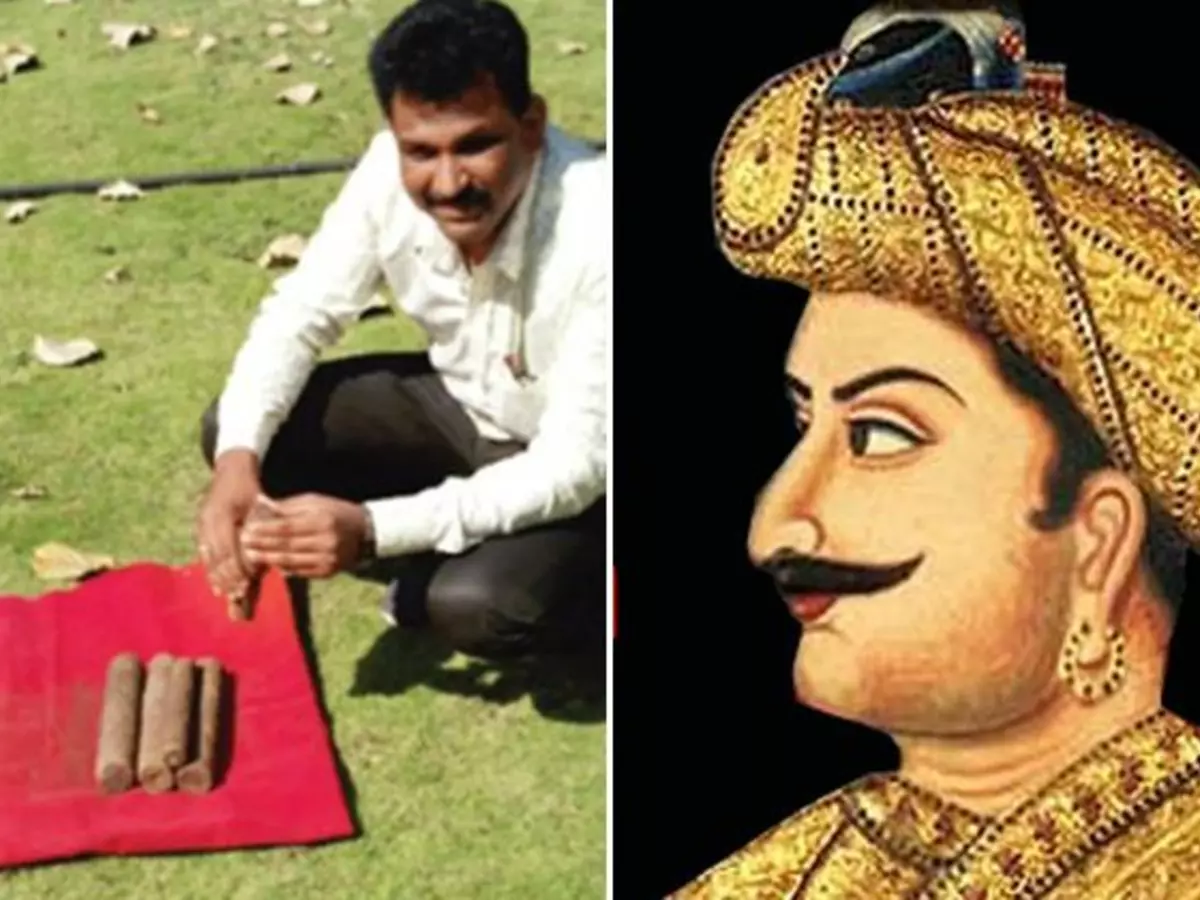Archaeologists Find Over 100 18th Century Missiles That Belonged To Tipu Sultan's Arsenal
Over a 100 war rockets from the 18th Century were found recently during the desilting of an open well in Shivamogga.

It is one of the most sensational archaeological discoveries in Karnataka. Over a 100 war rockets from the 18th Century were found recently during the desilting of an open well in Shivamogga.
The rockets used by the Mysore kingdom, during the Anglo-Mysore Wars, especially in the last two of them during the reign of Tipu Sultan, are considered the most-advanced of their age. Only five known specimens of the rockets were known to be in existence till now; three in the Government Museum in Bengaluru and two in the Royal Armoury, Woolwich, UK.
The rockets discovered were being studied outside of public glare for a few months now. When Bangalore Mirror asked Shejeshwara Nayak ¨C the assistant director and curator of the Government Museum, Shivappa Nayaka Palace in Shivamogga (where some of these rockets are now being kept for display) ¨C he said: ¡°When they have discovered a couple of months ago, these were thought to be some kind of shells. Dr HM Siddhanagoudar [historian] has identified them as rockets.¡±

¡°Rockets have been used in battles for 700 years. But it was only in Mysore, under Hyder Ali, that iron casings were first used. Before that, rockets had wooden or paper casings. The iron casings drastically improved their efficiency and range. Mysore rockets were the most advanced ones during the second half of the 18th Century,¡± said Nayak.
Hyder Ali¡¯s father Fath Muhammad worked for the Nawab of Carnatic before moving on to work for the Mysore Kingdom. Under the Nawab, he handled a rocket corps. Back then, these rockets were used for signalling during battles, not as weapons. Hyder became the first to use rockets with iron casing, and that¡¯s how they became deadly battlefield weapons.
After the fall of Tipu Sultan in 1799, hundreds of rockets of various kinds fell into the hands of the British. The Congreve rockets developed by the British in 1804 (and later used against the armies of Napoleon) were based on the Mysore rockets.
The Initial Finding
The rockets discovered in Shivamogga are likely to be put up for public display in March-April this year. However, how the discovery was made is not being revealed by authorities. The rockets are said to have been found in a well in Nagara of Hosanagara taluk, 60 km from Shivamogga, in a farm belonging to one Nagaraja Rao.

youtube
The rockets were basically metal cylinders that were filled with gunpowder and then strapped to a bamboo pole, sometimes up to 30 feet long. Mysore rockets had the highest range of around 1 km. During Tipu¡¯s time, more changes were made to these rockets. From a few hundreds, the ¡®cushoons¡¯ ¨C or regiments handling rockets ¨C reached a high of 5,000 men during his time. During the battles of the III and the IV Anglo-Mysore Wars, the rocket cushoons had a terrifying impact on the British forces, as recounted in several accounts of the period.
The area where these rockets were found was part of the Keladi Kingdom, one of the bigger principalities in Karnataka and was annexed to the Mysore Kingdom in 1763 by Hyder Ali. His successor, Tipu Sultan built a mint and an armoury at Nagara. Thus, these rockets are from between 1763 and 1799.

Nidhin George Olikara, a historian with specialisation in Tipu¡¯s era, said: ¡°These rockets were found sometime ago but were identified as rockets recently. Nagara in Shivamogga district earlier was home to an armoury and mint during Tipu Sultan¡¯s rule. The work of researchers is now over and scientists should step in to find out what kind of iron has been used to make rockets.¡±
The Remains
The newly discovered rockets are actually the iron casings. Those are the only part of the rocket that could have survived being buried for 200 years. The other parts, such as the bamboo pole and straps, are long gone. Like the records of that age which mention Mysore rockets of various sizes, the Shivamogga rockets are also found in various sizes. Most of the rockets are 7-8 inch long. A few of them are longer. The circumferences are 1, 2 or 3 inches.
